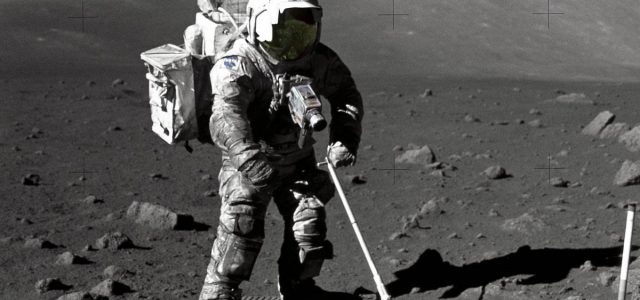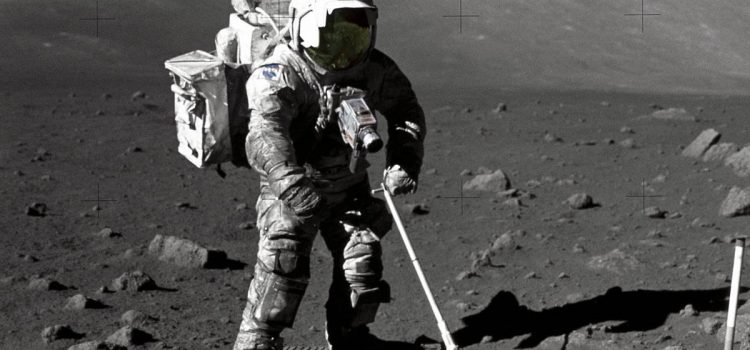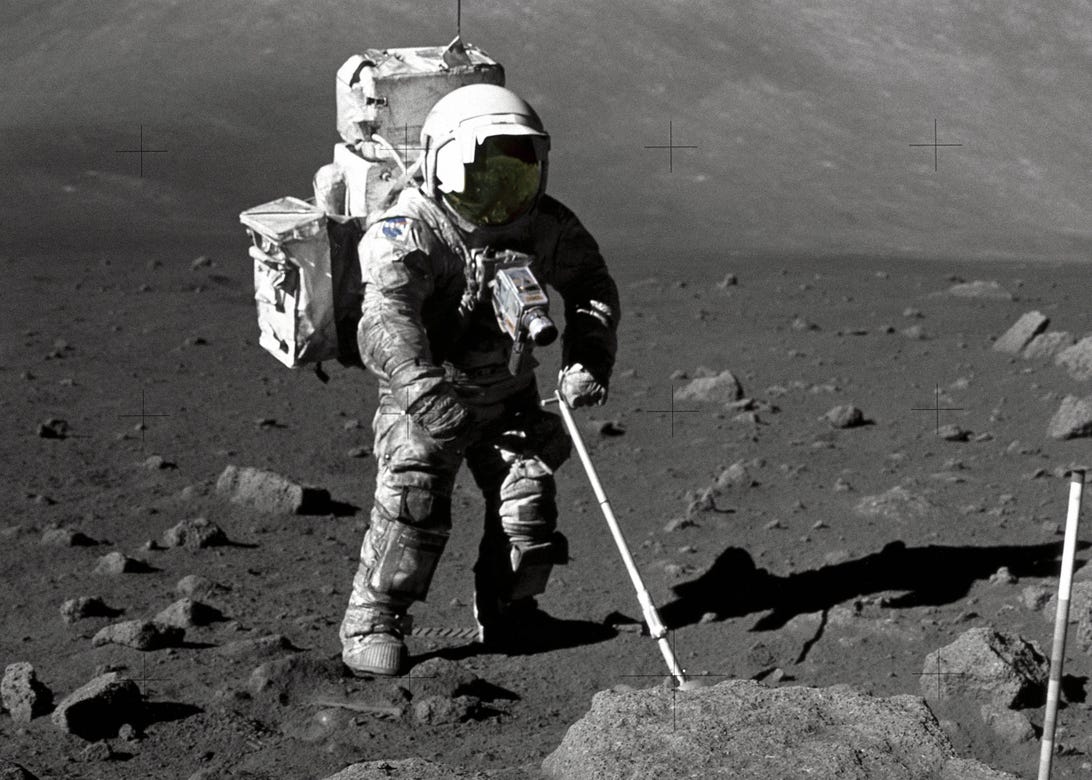



NASA astronaut Harrison Schmitt collects lunar samples during the Apollo 17 mission in 1972.
NASA
In December 1972, NASA astronauts Eugene Cernan and Harrison Schmitt drilled into the surface of the moon to collect lunar soil samples for transport back to Earth. This week, NASA finally opened one of the vacuum-sealed samples for the first time.
“We have had an opportunity to open up this incredibly precious sample that’s been saved for 50 years under vacuum,” said Thomas Zurbuchen, associate administrator of NASA’s Science Mission Directorate, in a statement. “We finally get to see what treasures are held within.”
The tube is a time capsule, not only from the deep geological history of the moon, but also from an earlier time in the space age when our tools were more primitive.
“The agency knew science and technology would evolve and allow scientists to study the material in new ways to address new questions in the future,” said Lori Glaze, director of NASA’s Planetary Science Division.
Zurbuchen says the timing is also serendipitous because it helps NASA prepare for its upcoming return to the moon later this decade as part of the Artemis program.
“Understanding the geologic history and evolution of the moon samples at the Apollo landing sites will help us prepare for the types of samples that may be encountered during Artemis,” he said.
Getting at the preserved sample wasn’t as simple as just popping a cap. Before the contents of the sealed tube could be extruded, it was first scanned using X-ray CT technology to create a 3D image of what the team could expect to find inside. Then all of the gas in an outer, protective tube was collected for study.
Next, the inner container was pierced to extract any gases present inside.
“We have extracted gas out of this core, and we hope that will help scientists when they’re trying to understand the lunar gas signature by looking at the different aliquots [samples taken for chemical analysis],” said Ryan Zeigler, Apollo sample curator.
Finally the powdery gray contents were pushed out of the cylinder and separated into half-centimeter increments.

The Apollo 17 core sample 73001 processing team works at NASA’s Johnson Space Center in Houston.
NASA/Robert Markowitz
Even before starting the process on Monday, the team had conducted dry runs using a mock-up in the lab. The whole process had to be done by sticking hands into huge gloves inside a vacuum glovebox and manipulating specialized tools to get at the sample.
The work was done as part of the Apollo Next Generation Sample Analysis Program, or Angsa, at Johnson Space Center in Houston.
Now, with the cat out of the bag, or rather the regolith out of the tube, the sample needs to be analyzed to see what exactly has been waiting half a century to be discovered.
NASA astromaterials curator Francis McCubbin says today’s astronauts will also pay the gift forward to scientists working in the latter half of this century.
“We curated these samples for the long term, so that scientists 50 years in the future could analyze them,” McCubbin says. “Through Artemis, we hope to offer the same possibilities for a new generation of scientists.”

